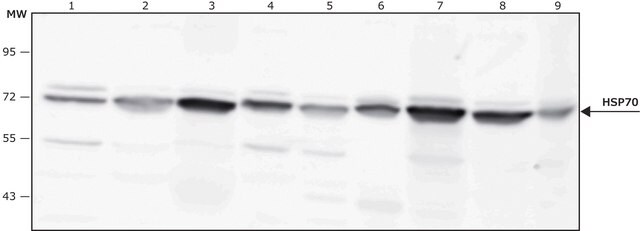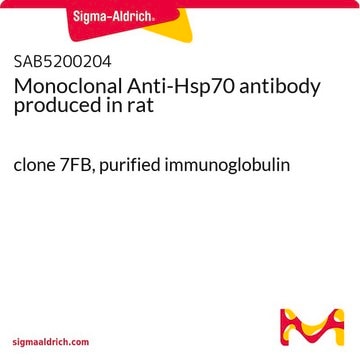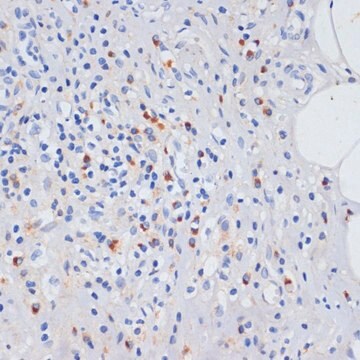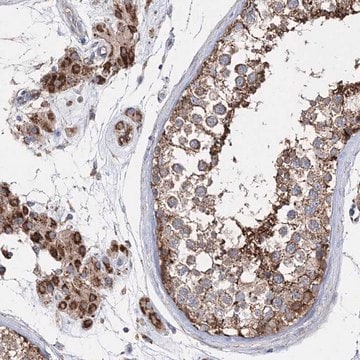SAB4200714
Anti-Heat Shock Protein 70 (HSP70) antibody, Mouse monoclonal
clone BRM-22, purified from hybridoma cell culture
Synonym(s):
Anti-HSP70, Anti-HSPA1A
About This Item
Recommended Products
antibody form
purified from hybridoma cell culture
antibody product type
primary antibodies
clone
BRM-22, monoclonal
form
buffered aqueous solution
mol wt
antigen ~70 kDa
species reactivity
plant, bovine, rabbit, chicken, human, fish, insect, monkey, dog, rat, sea urchin, mouse
concentration
~1 mg/mL
technique(s)
ELISA: suitable
dot blot: suitable
immunoblotting: 0.25-0.5 μg/mL using HeLa cell line extract
immunofluorescence: suitable
immunohistochemistry: suitable
isotype
IgG1
UniProt accession no.
shipped in
dry ice
storage temp.
−20°C
target post-translational modification
unmodified
Gene Information
human ... HSPA1A(3303)
mouse ... HSPA1A(193740)
rat ... HSPA1A(24472)
General description
HSP70 / heat shock protein family A (Hsp70) member 1A (HSPA1A), is encoded by the gene mapped to human chromosome 6p21.33. It is widely expressed in all tissues. The encoded protein is characterized with an N-terminal ATPase domain of 45kDa and a C-terminal substrate binding domain of 25kDa which is further subdivided into a β-sandwich subdomain of 15kDa and a C-terminal α-helical subdomain.
Immunogen
Biochem/physiol Actions
Physical form
Storage and Stability
Other Notes
Disclaimer
Not finding the right product?
Try our Product Selector Tool.
Storage Class Code
10 - Combustible liquids
Flash Point(F)
Not applicable
Flash Point(C)
Not applicable
Certificates of Analysis (COA)
Search for Certificates of Analysis (COA) by entering the products Lot/Batch Number. Lot and Batch Numbers can be found on a product’s label following the words ‘Lot’ or ‘Batch’.
Already Own This Product?
Find documentation for the products that you have recently purchased in the Document Library.
Customers Also Viewed
Our team of scientists has experience in all areas of research including Life Science, Material Science, Chemical Synthesis, Chromatography, Analytical and many others.
Contact Technical Service









